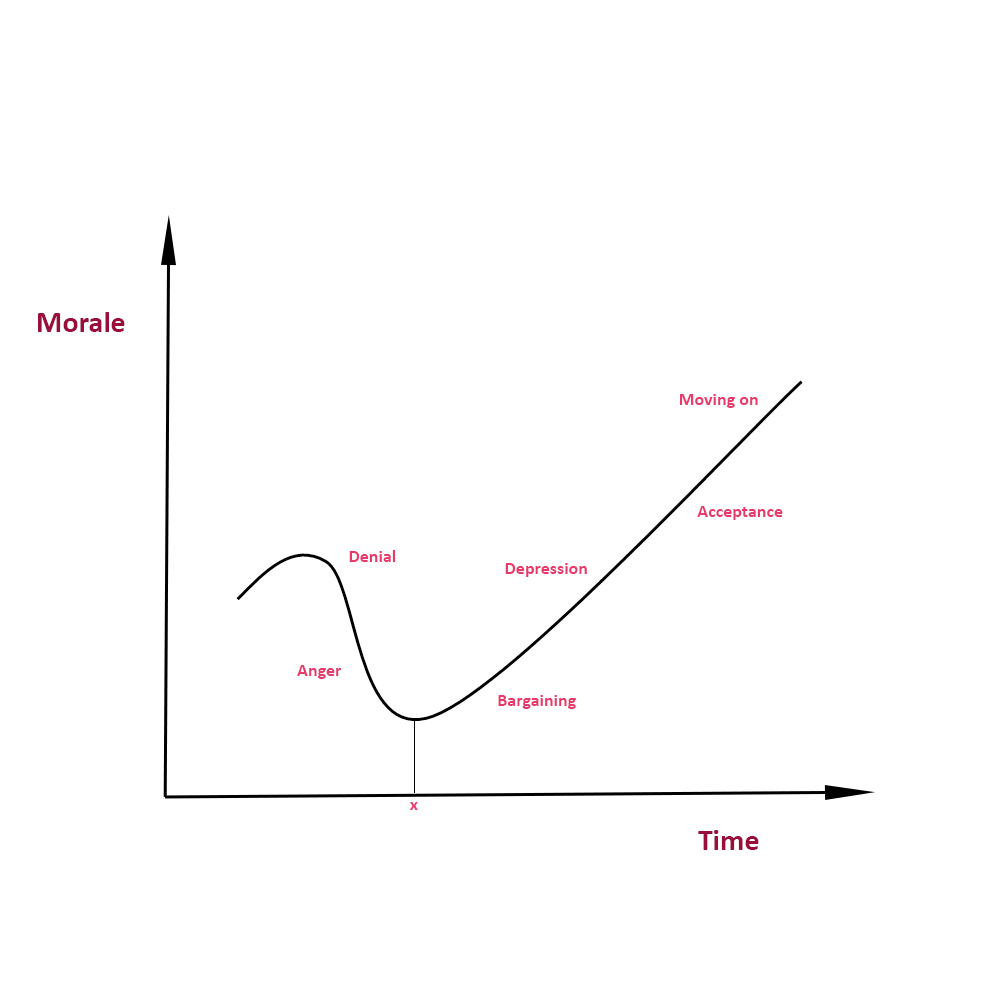12 Apr The Change Curve
The model below illustrates the emotional or psychological states we pass through during change. We all go through this curve at different speeds. The thinking amongst change psychologists is that we ALL pass through this curve during change. Knowing where we are and why can help us to better understand our reactions.
1. Denial
“They aren’t really going to go with it.”
2. Anger
“What a waste of time and money. How much do those stupid consultants cost.”
3. Bargaining
“If they want me to do that, fine but I wont have time to get on with my duties. Or if they make me do that I’ll resign.”
4. Depression
“This really is happening and there is nothing I can do about it”
5. Acceptance
“Well, this is how it is, but things aren’t so bad”
6. Moving on
“Actually this new set up is better than the old and I can see how I can make this work for me”
The reason for assessing these states is not to try and avoid any states we perceive to be negative. The skill is to accept you and your team may all experience these emotions and to harness those emotions towards the overall goal. Simply trying to avoid the ‘denial’ stage, for example, will only cause more resistance, you are better off giving a detailed explanation behind the strategy in order to change people’s opinions. Naturally over time it is likely you will see employees get behind a strategy, particularly when it is a successful one. The point x below demonstrates the moment where decreasing support for the strategy finally changes, and the mood starts to improve.


